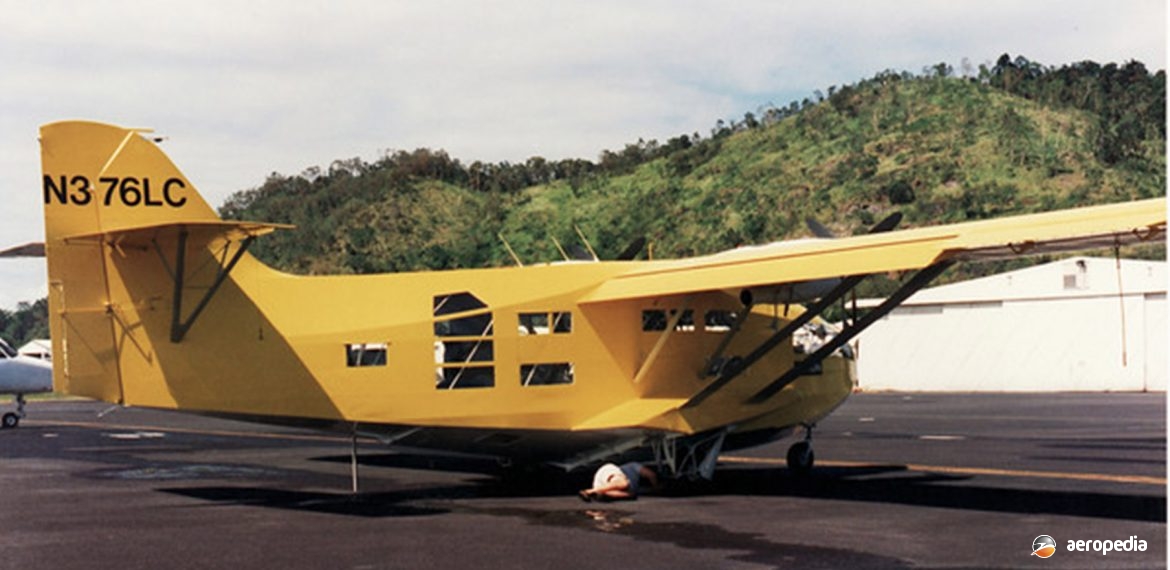Photograph:
Global Explorer N376LC visiting Cairns, QLD (Author’s collection)
Country of origin:
United States of America
Description:
Twin-engine amphibious flying boat
Power Plant:
Two 224 kw (300 hp) Lycoming IO-540 six-cylinder horizontally-opposed air-cooled engines
Specifications:
- Wingspan: 20.42 m (67 ft 0 in)
- Length: 12.14 m (39 ft 10 in)
- Height: 6.71 m (22 ft 0 in)
- Max speed: 193 km/h (120 mph)
- Cruising speed: 177 km/h (110 mph)
- Stalling speed: 97 km/h (60 mph)
- Empty weight: 2,266 kg (4,995 lb)
- Loaded weight: 3,629 kg (8,000 lb)
History:
The Global Explorer I (N376LT) was designed by prolific aircraft designer Dean W Wilson and built to meet the requirements of explorers Hubert de Chevigny and Nicolas Hulot, the first machine flying for the first time in April 1991. It was built with a wide and deep fuselage and had accommodation at the rear for sleeping purposes, being said to be able to accommodate up to nine persons, having a kitchen and a toilet. It was a high-wing monoplane and had a retractable undercarriage, being able to operate on water and land. During its career it was fitted with a range of engines from 149 kw (200 hp) to 224 kw (300 hp), the power plant fitted for each expedition depending on the altitude needed to be attained during operations.
It was quite a large aircraft which had high braced wings, with the struts from the fuselage extending to the lower sponsons. It had a tricycle undercarriage with the nosewheel retracting forward and acting as a bumper for operations on water. It had quite a lot of glazed areas in order to allow the operations of camera equipment. It is believed after returning to France one of the two aircraft completed crashed near Paris.
Two examples of the Explorer were constructed, the Model I registered N376LC (c/n 002) and painted yellow overall; and the Model II N376DT (c/n 001) painted white overall. The Model II was operated with the name L’Avion by Stephane Perron. N376LC was used for exploration and filming the length of the Great Barrier Reef for some months in 1997, and also did exploration work in Argentina and Bolivia. Both aircraft were eventually withdrawn from service due to the high cost of maintenance.
One (N376LC) survives dismantled awaiting restoration at a museum at Biscarrosse in France. This aircraft was involved in an accident at Breuil, Loir-et-Cher in France on 25 June 2001. After completing operations in Australia N376LC made a nine-day flight to Mongolia for further filming piloted by William ‘Bill’ Weist. It was known as ‘the flying yellow thing’.

